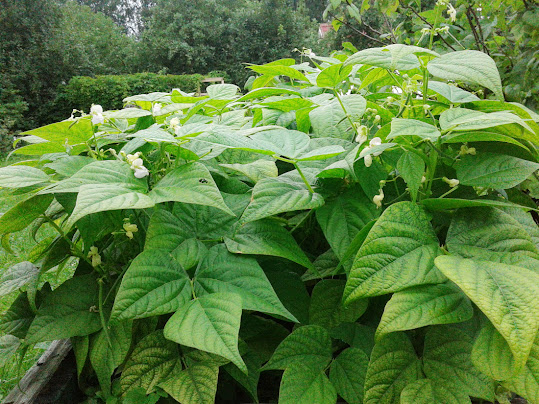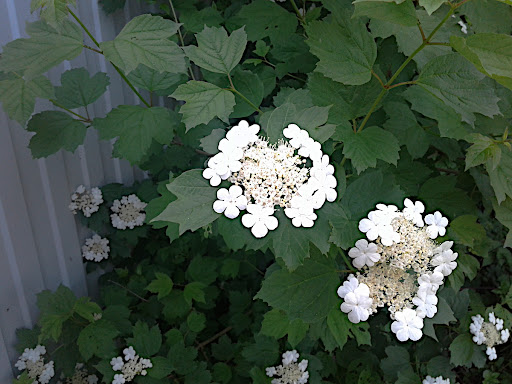In July the weather is gradable. Sometimes the sun shines all day and sometimes it’s cloudy and raining. Summer rain is warm. Vegetables and berries grow by leaps and bounds.
Juicy and sweet wild strawberries
Horseradish
Look at this horseradish. It blooms and its small white flowers are loved by bees and bumblebees. The horseradish has already grown long leaves. There are a few holes in them - the snails ate it. I collect the snails and throw them away. When I harvest the cucumbers, I will put the horseradish leaves in jars and make pickles. Horseradish leaves give cucumbers a slight spiciness. Some people collect horseradish roots, grind them and make a seasoning. I don’t know how and prefer to buy a jar of ready-made horseradish seasoning.
Sorrel grows here. It is a perennial plant and begins to turn green as soon as the snow melts. I collect sorrel leaves several times during the summer and make vegetable soup with sorrel. Yummy!
These are black beans. They grow quickly and bloom now. They have large pods and each of them contains 4-5 black beans. I use them as a side dish for meat.
These are red beans, very productive. There will have 6-10 pods on one bean bush. I collect the bean pods, dry them and take the beans out. In winter I stew or make a bean soup.
I sowed vegetable seeds in the greenhouse as soon as it became warm. Now I am harvesting juicy lettuce leaves, dill, parsley and coriander. Every day there is a green salad on the table.
Dill and parsley
Now every day I watch how cucumbers and tomatoes grow. The tomatoes are still green, but growing quickly.
Cucumbers are very tasty, juicy and slightly sweet.
Cucumbers, dill and parsley
I can't walk past a pea bed without picking a few pods. Peas are sweet and tasty. I want to freeze some of the peas and save them for the winter.
Sweet peppers are ripening
I hope for a good gooseberry and red currant harvest. The bushes are full of berries, they are sweet and sour.
Do you like fresh vegetables and berries? Do you grow any of these?























